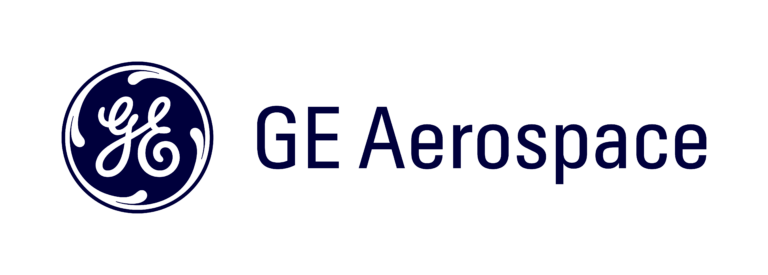A Costly Concern for Businesses:
Section 174: Research & Experimental (R&E) Expenditures
As part of the 2017 Tax Cut and Jobs Act, starting in 2022 U.S. businesses are no longer allowed to fully deduct their R&D expenditures from their taxable income. Instead, they must deduct the expenses according to a 5-year depreciation schedule (and a 15-year schedule for R&D performed abroad). This overview by VTTA member Davis & Hodgdon Advisory Group describes the change and potential impact to businesses.
By Davis & Hodgdon Advisory Group
What was once thought to be a provision that ultimately was to be eliminated has turned into a tax law change that almost every business now needs to assess for 2022 tax returns!
Congress failed to pass legislation that would repeal or delay mandatory capitalization of Internal Revenue Code (IRC) Section 174 costs in their most recent session, and this inaction will impact many business owners. Under the IRS definition of R&E, most businesses now incur some of these expenses. The Tax Cuts and Jobs Act of 2017 (TCJA) made a significant change to Section 174 that went into effect for taxable years beginning in 2022, and you need to be aware of a major change to the tax treatment of expenses.
Section 174 R&E expenditures eliminates the ability to currently deduct R&E expenses. Instead, taxpayers must now capitalize and amortize these costs over either five years or 15 years, depending on where the research activities are performed, both using a midyear convention.
Certain industries will be impacted much more than others. Technology, manufacturing, and bioscience companies, for example, will see major increases to their taxable income beginning in 2022.
What Costs Are Subject to The Revised Amortization Provisions of Section 174?
The language in the TJCA indicates that the mandatory capitalization period applies to all Section 174 costs, as well as software development costs. Although the law does not contain an exhaustive list of covered expenses, the rules and other guidance provide several examples of Section 174 costs, including researcher salaries, overhead expenses, depreciation, utilities connected to facilities used for R&D, supplies used during the research process, and certain software development costs.
More specifically, expenditures incurred in connection with the taxpayer’s trade or business which represent research and development (R&D) costs in the experimental or laboratory sense. This generally includes all costs related to the development or improvement of a product, software, process, formula; etc. The term includes the costs of obtaining a patent, such as attorneys’ fees expended in making and perfecting a patent application. Expenditures represent R&D costs in the experimental or laboratory sense if they are for activities intended to discover information that would eliminate uncertainty concerning the development or improvement of a product, software, process, formula, etc. Whether expenditures qualify depends on the nature of the activity to which the expenditures relate, not the nature of the product or improvement being developed or the level of technological advancement the product or improvement represents.
The law applies on a cut‐off basis and does not impact the treatment of amounts incurred in prior years.
How Is Amortization Calculated?
Amortization is calculated using a straight‐line recovery period of either five years for costs incurred in the U.S. or 15 years for costs occurred outside the U.S. However, as taxpayers must use a mid‐year convention to determine first year amortization, the recovery period is effectively six and 16 years, respectively. Taxpayers will need to track expenses incurred for the entire year as the entire year amount is subject to amortization according to the mid‐year convention and the applicable recovery period for U.S. and non‐U.S. R&E expenditures. Businesses might benefit from setting up new General Ledger accounts to track the pertinent expenses.
The Amortization Provision of Section 174 Impact on Other Areas of Taxable Income
As the amortization of Section 174 expenses will impact taxable income, any items impacted by a change in taxable income should be considered as well. In certain instances, there could be an impact to a taxpayer’s effective tax rate to the extent that a permanent provision is impacted by Section 174.
Section 174 As it Relates to The Research & Development (R&D) Credit
The TCJA specified that expenditures eligible for the R&D credit are required to be amortized under Section 174. Accordingly, taxpayers computing a R&D credit study can use their credit calculation as a starting point for capturing costs under Section 174. However, Section 174 includes more types of expenses than those that qualify for the R&D credit, such as:
- Activities related to patent departments
- Foreign-based research activities
- Overhead or other indirect costs, such as depreciation and utilities
Due to the broad definition of Section 174, taxpayers should prepare for their Section 174 costs being significantly higher than the amount of qualified research expenditures for the credit, particularly for taxpayers that invest heavily in foreign research activities.
Are Businesses Required to Amortize R&E Costs Paid to Third Parties or Related Parties?
Under existing guidance, amounts paid to another party for contract research are considered Section 174 expenses and presumably subject to the revised rule, although uncertainty remains for the treatment of research costs incurred by taxpayers conducting research on behalf of others that receive payment for such research.
Recipients should not act on the information presented without seeking prior professional advice. It is important to note that there is a great deal of uncertainty resulting from the inaction of Congress and limited guidance available at this time.
About Davis & Hodgdon Advisory Group
Davis & Hodgdon Advisory Group (DHAG) is a business and financial services firm located in Vermont. DHAG is a one-of-a-kind financial firm with the unique ability to offer tax planning through Davis & Hodgdon CPAs, financial and investment planning through *Copper Leaf Financial, and client accounting services through Convergent Accounting. These comprehensive services address all your business and individual needs and each has a fully dedicated staff. Since 1990 the firm has provided clients with progressive, proactive services through expert staff, high-end technology, and unparalleled efficiency. Contact DHAG at 802-878-1963 (Williston) or 802-775-7132 (Rutland).
*Copper Leaf Financial is an affiliated and separately registered entity.
Resources







